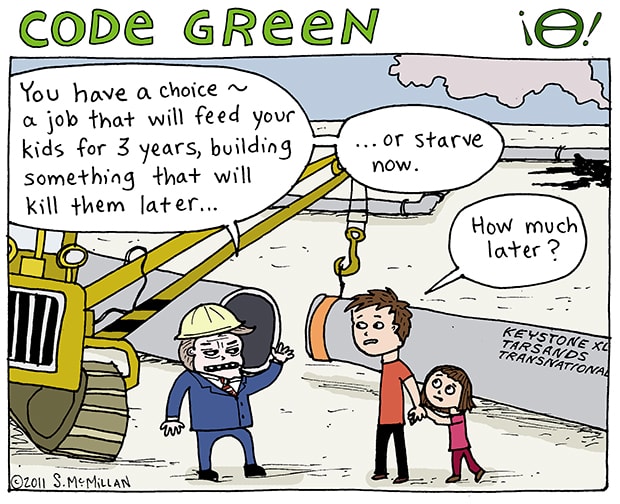Poor people are easy to buy.
—San Miguel Ixtahuacán choirOur defeat was always implicit in the victory of others. Our wealth has always generated our poverty by nourishing the prosperity of others, the empires and their overseers. In the colonial and neo-colonial alchemy, gold turns into scrap metal and food into poison.
—Eduardo Galeano
Biotech in the Global South: Life Limited?
Politics, logic and mathematics are inseparable.
—Helen Verran
“We love those shows, Say Esse EE (CSI), Ley Y Orden, Números! Everyone here watches them! Sometimes we try to schedule a meeting and no one can make it and then we realize it’s because the show is on!” I was in Guatemala City at the Myrna Mack Foundation, a human rights organization named for the Guatemalan anthropologist murdered by the state on September 11, 1990. Enrique went on, “It’s amazing! The science! They can convict with a single hair! A microscopic bit of dust! Just DNA! Here we have bones—whole skeletons!—with tiro de gracia (execution shot), clothes, witnesses, even some confessions, and we still can’t get the perpetrators put in jail!” It took over a decade for Myrna’s sister Helen and a network of allies to convict Myrna’s killers. 1
I think many of us would echo Enrique that recent developments in the biosciences are “amazing!” and seem to promise something like Life Unlimited, the technophilic promise of “neato!” fixes for humanity’s problems, from injustice to cancer, war to pollution. It’s “science fiction today, cold hard fact tomorrow” stuff. My students—like so many who are ill or seeking Gaia-saving alternatives to apocalypse (not to mention venture capitalists)—are deeply invested in such progress narratives. Their curmudgeonly teacher is mostly unsuccessful in wagging a finger and pushing for attention to costs as well as benefits, to heightened surveillance and deepening control (Facebook is using you!!), to coltane mining, toxic waste, Foxconn suicides, massive animal sacrifice, and the guinea pigging of prisoners and poor humans in R&Ding miracles. As an anthropologist of Guatemala, a small, poor country still recovering from 36 years of genocidal civil war with some of the worst life statistics in the hemisphere (50 percent of children are chronically malnourished, with the majority Mayan population most affected), I try to remind them that the amazing fruits of technoscience are SO not evenly distributed.
Life seems quite limited in Guatemala, even 15 years after the war ended. There is so much death: through illness, poverty, hunger, crime, the growing “drug war,” with its attendant casualties and addictions, “femicide,” minimal education possibilities, and the increasing perils of crossing the border to search for something better. And now, as I explore in this essay, a new danger: mountaintop-removal mining and its maleficent effects on the nature/culture assemblage of land-crops-water-animals-humans-air. 2 What science there is, as a Guatemalan friend grimly joked, is “maquila science”—like border assembly plants, all the inputs and profits are foreign, the preserve of the tall white guys who drop in bearing impressive graphs, statistics, and numbers to prove the water is safe, your blood is not contaminated, those rashes on your kids are your fault because you’re unhygienic. It’s far from the panacea it might seem in the overdeveloped North. My “critical interventions,” however, mainly come off as technophobia, Ludditism or—since I’m too docile a subject to smash machines—just Amish.
But I have to interrupt myself here, as I was interrupted 28 years ago on my first trip to Guatemala, full of beginner’s hubris, thinking I knew what to expect when I got off the bus in the highland town of Nebaj. Isolated, famous for being traditional, with men and women wearing distinctive Mayan clothing (traje) and where aj’q’ij or day keepers maintained the pre-Colombian Mayan calendar, it was also one of the areas hardest hit by the war during the early 1980s—a town of refugees and victims. Close to a hundred hamlets had been massacred and destroyed by the army, often in extremely low-tech ways, as children’s heads were smashed against stones, people were killed by machetes or burned alive en masse inside wooden churches. These horrors led the 1999 United Nations truth commission to count the Nebaj region as one of the four cases that proved the war was genocide. 3
And I was there to help. With my modern tools and first world connections, I would document human rights abuses and get the word out. So I stepped off the bus and was met by a gaggle of kids trying to shine my shoes or sell me some weavings. When they asked me my name and I told them, “Diana,” they began to shout, “It’s the Queen of the Lizards!” I had no idea what they were talking about, vaguely wondering if they were calling me out as a gringa oppressor (the area had been highly organized by the guerrillas and was considered liberated territory for a while). It turned out they had been watching “V,” a US science fiction show (rebooted in 2009) on a cantina TV run off a generator. It’s about an alien invasion by apparent humans who turn out to be grotesque lizards come to strip-mine earth, led by their queen, Diana. (So basically they were calling me out!) Encountering science fiction in this out-of-the-way place was my first clue that things might be more complicated than North/South and helper/victim. 4 As Mei Zhang argues, we cannot get too comfortable with divisions between modernity (more and better life) and tradition (life limited). Perhaps we need to invest less in solidarity than fluidarity—aware that subjectivities and knowledges are contingent, formed in relation, and on the move. This means putting the labile back into these laboratories (rather than achievements) of modernity.
Labor is also an etymological and material root of the lab, the experimental site and condition of possibility for the biotechnologies of life: both limited and unlimited. Melinda Cooper shows the work it took to create the US biotech revolution, the efforts, war-like strategies, and hegemony-building that brought into being “the prospective value of promise, turning life science speculation into a highly profitable—indeed rational—enterprise.” 5 Infrastructures, as Michelle Murphy suggests, are built, sedimented, and thereby become the context in which a DNA sample, a stem cell, a reading of heavy metals in a blood or water stream, can happen. And, in turn, make other things happen.
There’s a famous story in the hagiography of Dr. Che Guevara that soon after the rebels’ disastrous landing in Cuba, he was faced with a choice. Wounded and only able carry one thing, he had to decide between his medical kit and his gun. Both were “life” technologies. He chose, of course, the gun, believing he could save more lives in the long run by transforming the structures that consigned so many to die. Recent coverage of the amazingly limited AIDS epidemic in Cuba suggests he was right. 6 In Guatemala, however, US-backed counterinsurgency necropolitics were aimed precisely at obliterating the revolutionary and indigenous hopes for a more equal distribution of life through land reform, living wages, health care, and political representation. But those hopes and struggles are tenacious, weedy, going to seed.
In organizing “Life (Un)Ltd,” Rachel Lee follows a similarly rebellious impulse, challenging us to resist the invisibilizing and naturalizing of infrastructural violences through feminist, antiracist, and postcolonial critiques. Her title plays on “Ltd,” corporate shorthand for limited liability, a form of enterprise that shields stockholders from responsibility for the debts or actions of a corporation. In other words, it points out the often covert regulatory infrastructures that externalize, offshore, and temporally postpone cost, risk, waste, and loss, pushing them into the private (the home—where labor is reproduced “for free!”), the public (who pays when banks are too big to fail?), various sacrifice zones (to paraphrase de Beauvoir, is a wasteland born or made?) and the future (by the time the cancer develops you’ll be dead anyway, ex-World Bank president Larry Summers assures us). These are life technologies that kill without ever touching a Bushmaster XM-15.

Who, then, is liable? Responsible? Where do these risks fall? As many of the essays gathered here remind us, women, indigenous people, racialized others, the undocumented, and the poor have shouldered these almost unlimited burdens. They are the people whose future is already here. Their gold is already scrap, their food already poison, their bodies already toxic. The warlike strategies of many Guatemalans, revolutionaries and counterinsurgents, were precisely waged over these unfair burdens, these infrastructures of life.
So without diluting feminism’s lively insistence on the centrality of gender inequality, race, class, and nation are not just co-conspirators in producing “expendable populations,” but are organized through formations of exclusion and dispossession that are structurally similar to patriarchy, giving the white, Anglo-Saxon, Protestant, hetero, wealthy male the best life chances. The labors I examine here—of Mayan men and women and their nonindigenous collaborators to “count,” as they confront a transnational mining company backed by their own nation-state, and to safeguard life-giving land and water for themselves and for future generations—are feminist struggles.
Following Enrique’s “amazing!” through the frustrating limits of the postwar Guatemalan political system where the perpetrators still (mostly) run things hand-in-glove with corporate globalization (aka neoliberal neocolonialism), I explore struggles over differences in live-ability and response-ability. I do this, perhaps surprisingly, through counting, and in three modes: counting people through referenda; counting that measures toxins and thresholds; and ac/counting in the weighing of costs and benefits, prices, and values. I’ll explore the qualities of such quantities, and their qualifications (limits), including the relations between precision and (almost Un(Ltd)) uncertainty. I argue that counting, as well as songs, political rallies, legal precedents, and bioassays to read arsenic levels in drinking water, are bio/life/technologies. And I must emphasize here, as we begin, that in Guatemala, their deployments remain deeply shadowed by the profusion of necrotechnologies and thanatopolitics of an ongoing war by other means. As a Mayan antimining activist said, people “remember the war. They are afraid it might happen again.”
- Symptomatic of the intertwining of life and death technologies in Guatemala, most judges can’t get life insurance policies.[↑]
- Or not so new, as Eduardo Galeano, in The Open Veins of Latin America: Five Centuries of the Pillage of a Continent, (New York: Monthly Review Press, 1979) makes clear. The search for Eldorado, i.e., gold and silver, was the great galvanizer of European colonization of the Americas (the only product of interest to their creditors in China). These inanimate metallic actors—pulled at such enormous human cost from the earth’s entrails through enslaved indigenous and African labor, “freeing” them to circulate the globe—founded a whole new world system. And not only through specie. The “discovery” of the eerie regularity of mining disasters birthed the modern science of statistics, while the semi-industrial production of coca to keep those workers going in the great mine of Potosí in Bolivia was an early harbinger of today’s military-pharmaceutical-industrial complex.[↑]
- CEH (United Nations Commission for Historical Clarification), Guatemala: Memory of Silence, Tz’inil Na’tab’al, vols. 1-12, (Guatemala City: United Nations, 1999).[↑]
- Diane Nelson, A Finger in the Wound: Body Politics in Quincentennial Guatemala, (Berkeley: U of California P, l999).[↑]
- Melinda Cooper, Life as Surplus: Biotechnology and Capitalism in the Neoliberal Era, (Seattle: U of Washington P, 2008): 28.[↑]
- Donald G. McNeil, “A Regime’s Tight Grip on AIDS,” New York Times, 7 May 2012: D1.[↑]




